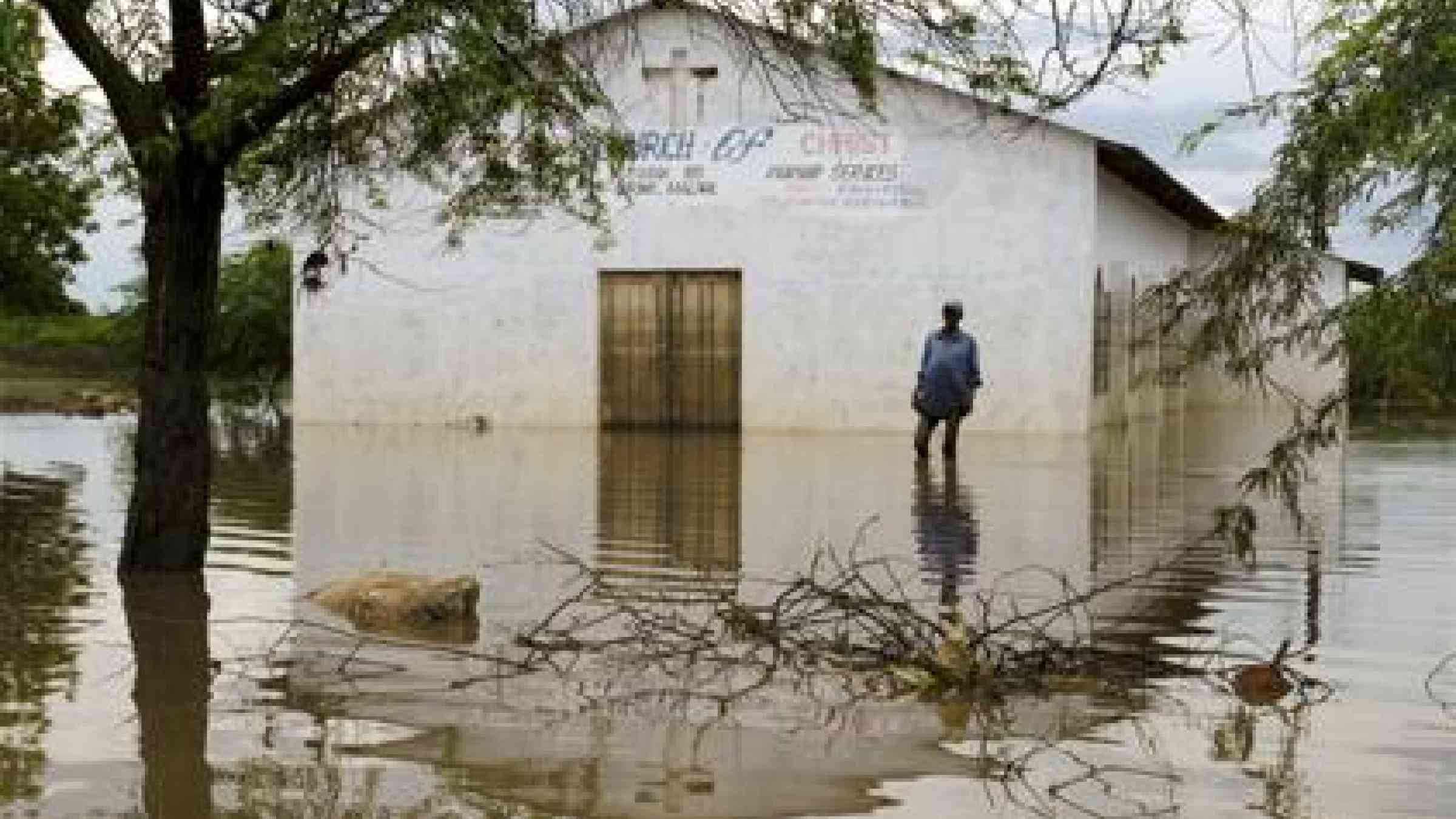Floods and poverty collide in Malawi

A flooded church in Bangula, Nsanje District, southern Malawi. (Photo: Arjen van der Merwe/UNICEF)
NAIROBI, 28 January 2015 – Lashed by torrential rains, Malawi and neighbouring countries are in the grip of a major flood crisis, with scores of lives lost, and over 600,000 displaced in Malawi alone.
It’s a familiar collision between a major hazard and other drivers of risk in a country where poverty is endemic along with high rates of communicable diseases including HIV and malaria. The loss of medical records and personal health passports is a major concern.
The flood crisis has disrupted access to food, sanitation, drinking water, medication and health services. The education system has been disrupted for 200,000 children while 415 schools have been damaged and others have been turned into shelters.
In Malawi, the death toll could have been higher than the estimated 170 lives lost but early warnings have been disseminated for the last five weeks as the national meteorological service has been monitoring the situation closely and keeping local communities informed through the Red Cross and other channels.
The floods have affected 15 of Malawi’s 28 districts. Chikwawa, Nsanje, Phalombe and Zomba districts are the worst-hit, with some 153 people reported missing in Nsanje, according to the Department of Disaster Management Affairs of Malawi (DoDMA).
Malawi’s President Arthur Peter Mutharika has declared all the flood affected districts “disaster areas” and called for international support, especially for search and rescue operations, food and shelter support.
Fears of food insecurity and disease epidemics are rife. Large swathes of fields with crops have been inundated and heads of livestock drowned. Infrastructure has been damaged including roads and bridges.
MSF fears that as the water recedes and areas with stagnant water expand we expect an increase in the number of cases of malaria.
In Makhanga village on the East Bank of the Shire river, Nsanje district, a third of MSF consultations for children under 5 is related to diarrhea, of which some are severe. This is a strong indication of poor drinking water quality.
The Nsanje district has a HIV prevalence of 16% of the adult population. People who have lost everything also lost their personal drug stocks and health passports. Whereas the provision of ARVs is now assured again in almost all the health facilities, many patients in Nsanje districts have been out of treatment for up to two weeks.
Without their treatment, patients will have depressed immune system and are consequently at risk of becoming sick, the risk depending on each patient’s medical profile. Patients coinfected with TB are especially vulnerable. Better systems of health surveillance need to be put in place to ensure early detection of outbreaks.
Besides Malawi, heavy seasonal rains have caused flooding in Mozambique, Madagascar and Zimbabwe affecting 742,500 people in the four countries, according to a UN Office for the Coordination of Humanitarian Affairs update.
The region is confronted by climate variations which have a significant influence on the scale, timing and frequency of precipitation and runoff patterns, resulting in frequent droughts and floods.
Explore further
Also featured on
Is this page useful?
Yes No Report an issue on this pageThank you. If you have 2 minutes, we would benefit from additional feedback (link opens in a new window).